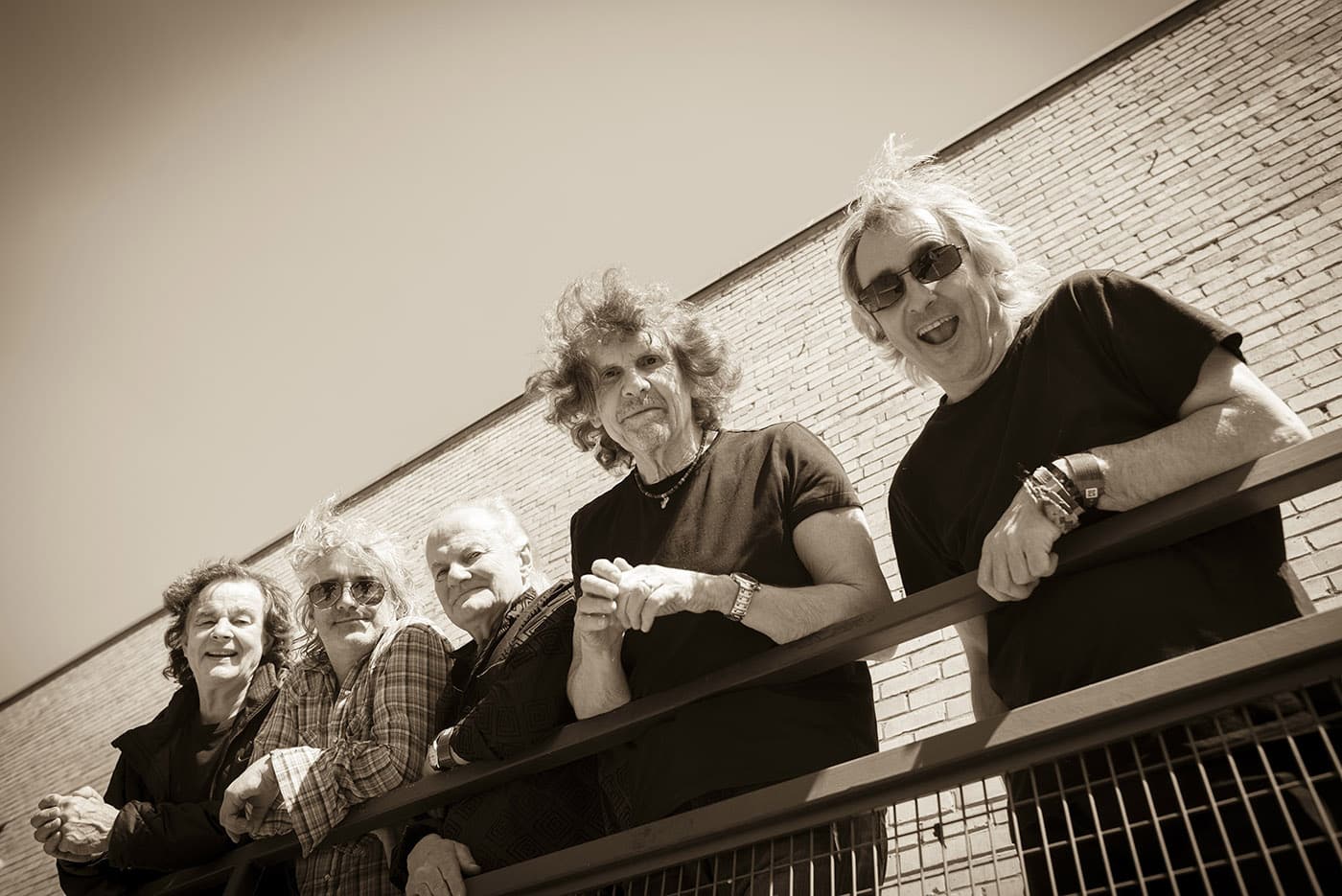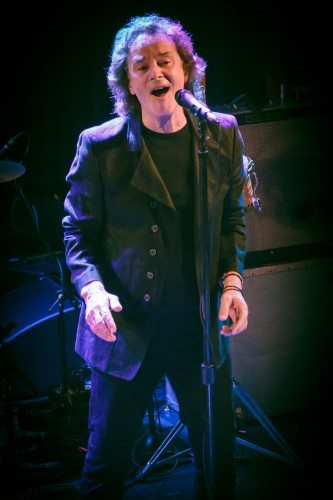
Dave Lichterman/ Lavid Photos
The most mysterious British Invasion band is more popular today than it was 50 years ago when it landed in the United States with a No. 1 hit.
It had an album considered one of the greatest in rock history along with one of the most iconic songs that was released long after the group had disbanded. It used The Beatles’ lost instruments to make the recordings. With a sound unlike any other British band, it was the first to appear on a major U.S. music television show. It toured the deep South with black bands during the Jim Crow era. And of course any story that involves Zombies includes life-threatening accounts of guns and coming back from the dead.
With founding members Colin Blunstone and Ron Argent and the blessings of the remaining surviving members, the Zombies are indeed back.
“It’s totally unexpected,” Blunstone told Tahoe Onstage.
The original Zombies only lasted three years from 1964-67.
Blunstone and Argent, who had long, successful careers with different projects, reunited for six shows in 1999.
“When we played in 1999 what really took us by surprise was the huge worldwide interest in the Zombies,” Blunstone said. “We had such a short career, maybe people were intrigued as to what happened. Gradually we played more and more Zombie material. Everyone was calling us the Zombies anyway so we thought maybe it’s time to acknowledge our heritage and go out and perform as the Zombies. The other original members were fine with it.”
Many of the Zombies musical peers from the ’60s didn’t live to see the ’70s.

“One of the ways to survive is to not get caught up in record sales and chart positions,” Blunstone said. “Try to think of it as a craft. And to try to work at it to be the best you possibly can, don’t compare yourself to other people. That’s one way to retain your sanity and stay in the music business.”
The analytical approach brought the breakup of the band.
“The world was a bigger place and communication was quite poor,” he said. “We often didn’t realize that we had a hit record or album until years afterword.”
There was never even a discussion about reuniting.
Blunstone was just 18 years old when “She’s Not There” was recorded. By the time he was 21, “we perceived ourselves as being unsuccessful. We felt it was time to move on, quite amicably, and try other projects.”
The album “Odessey & Oracle” was released in 1968 after the group had broken up. It spent just one week in the Billboard charts. A song from that record, “Time of the Season,” became a hit in 1969. Decades later, Rolling Stone magazine listed “Odessy & Oracle” as No. 100 in its “Top 500 Albums of All Time.”
The album was recorded at Abby Road studios, right after The Beatles had made “Sgt. Pepper’s Lonely Hearts Club Band.” (Rolling Stone ranked that album No. 1.) The Fab Four left behind tambourines, maracas and a mellotron, which staff members said belonged to John Lennon. “We used all of it,” Blunstone said. “We used the three same engineers. The mellotron is very dominant on it. It would have been a very different sounding album without it.”
The Beatles led the British Invasion, but the Zombies came across the pond, too. It played “Tell Her No” in the first episode of the TV series “Hullabaloo.” Blunstone, who wore a black tie and hair that covered nearly all of his ears, said he lip synched the lead vocals but the audio of women who screamed in the audience was real. https://www.youtube.com/watch?v=ezSMbQKQEJI
The boys’ looks also captured the attention of a policeman during one of the Zombies three U.S. tours.
“Las Vegas was quite undeveloped,” Blunstone said. “Ron and I walked to the edge of Las Vegas where there was just sand. We were stopped by police. Maybe we looked different. Maybe the hair was the main thing. It was nothing by today’s standards but he was very interested in us and what we were up to. To start with I remember him being quite officious but we were very passive and I think we found it quite amusing, not being rude, but we just didn’t understand what he was going on about and he gave up relatively quickly. We were just going for a walk.”
The tour was more tense when it traveled by bus across the South. The productions were like a revue, with each of the 14 bands playing just one or two songs. Many of the musicians were black. During the Jim Crow era, there were separate restrooms and drinking fountains for whites and “colored.”
“There were hotels we couldn’t stay at and restaurants we couldn’t stop at and it was very challenging because these acts were our friends. There were times when it got really scary. With us being English, it was very foreign to us. It was difficult to understand but I definitely got to understand it a bit quickly.”
The Zombies jazz and classical sound called “baroque rock” contrasted to the other British bands. But they started just like the others. The original name was the Zombies Rhythm and Blues.
“I don’t think it’s a secret that any band from the British Invasion, that their heroes and their influences were all American, but of course we did play it in a slightly different way. But I think we were all really intrigued as to why the vast majority of American audiences were hearing and acknowledging this music for the first time being played by British bands. It’s always been a bit of a mystery to me.”
The Zombies came to its first recording session prepared to cover well-know R&B songs. Producer Ken Jones, as an aside, mentioned, “You know, you can always write something,” Blunstone said. “Two days later Argent came back with ‘She’s Not There.’ I was surprised out of my skin. I had no idea he could write songs. We knew right away it was a special song.”
After “She’s Not There” became a hit, the record label wanted the Zombies to make an entire album.
“But Ron Argent and Chris White didn’t have a back catalogue of songs so our first album is a bit of a mismatch of new songs written by them and rhythm and blues classics. We didn’t have any other new songs to put in there. I really felt that album was recorded before we were ready material wise.”
Music of the British Invasion was just part of a cultural revolution.
“The art world seemed to center on England and in particular London,” Blunstone said. “Obviously there was the music but if you think about John Osborne in theater, Mary Quant in fashion, David Bailey in photography and models Twiggy and Gene Shrimpton and so many different iconic figures, in films Michael Caine.”
The Zombies band was not properly compensated for its live shows, Blunstone said, but Argent and White continue to cash in with their publishing rights. “Time of the Season” and “She’s Not There” have been used in numerous movies and commercials. The songs continue to be played on classic rock radio.
Argent’s “Time of the Season” includes an expression that became popular many years later: Who’s your daddy?”
“It’s just a little gentle nod to ‘Summertime,’ ” Blunstone said.
George Gerswin in “Summertime” wrote, “Your daddy’s rich and your mama’s good lookin.’ ” Angent’s homage was “What’s your name? Who’s your daddy? Is he rich, like me?”
The Zombies popularity endured during the years it was away. One British band even toured the U.S. claiming to be the Zombies. Blunstone complained to the musicians union, but it took more than that to stop the imposters.
“One of the fans goes into the dressing room and said, ‘You’re not the Zombies.’ This guy pulled a gun on them. For anyone that would be scary but I can assure you for an English person it’s especially scary because we never see guns. So I guess you know how to stop people who are impersonating you. I only say that as a joke. I wound not recommend that at all but it was very effective.”
Blunstone and Argent have made three albums since reuniting, the most recent, “Breathe Out, Breathe In,” as the Zombies.
Jim Rodford, who played with Argent’s band ARGENT as well as the Kinks, plays bass. His son Steve is the drummer and Tom Toomey plays guitar. On Saturday, Aug. 23 the Zombies appear in Harrah’s Lake Tahoe South Shore Room for the second time.
“I didn’t think I would be playing live at this point of my life,” the 69-year-old Blunstone said. “And I certainly didn’t think I would be playing live with the Zombies.”
The Zombies
When: 7:30 p.m. Saturday, Aug. 23
Where: Harrah’s Lake Tahoe South Shore Room
Tickets: $44
